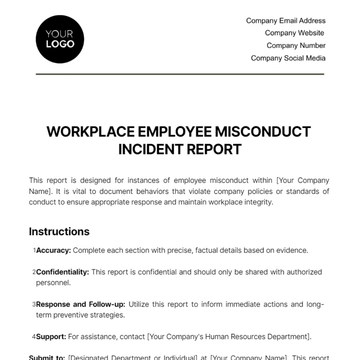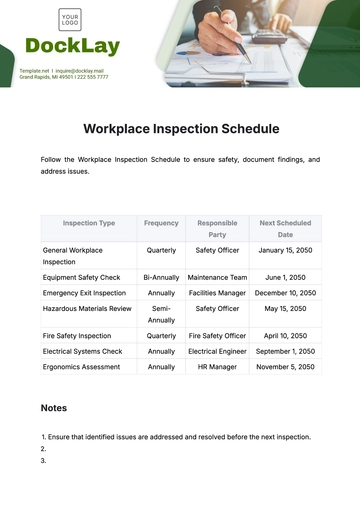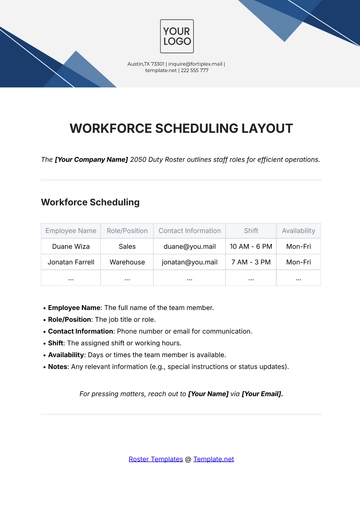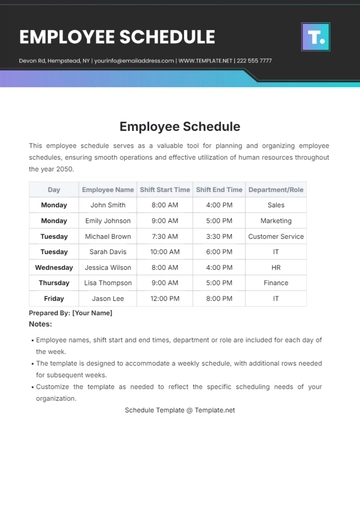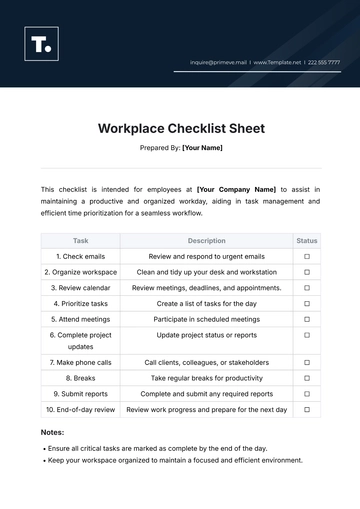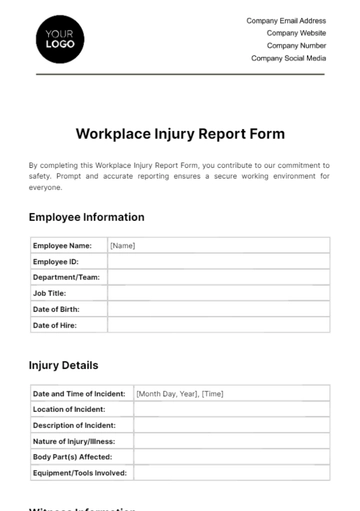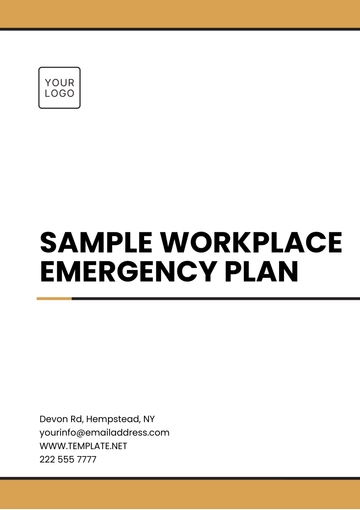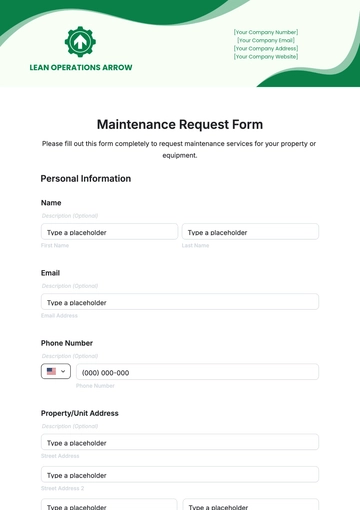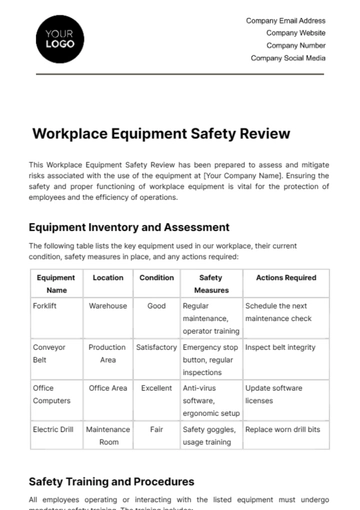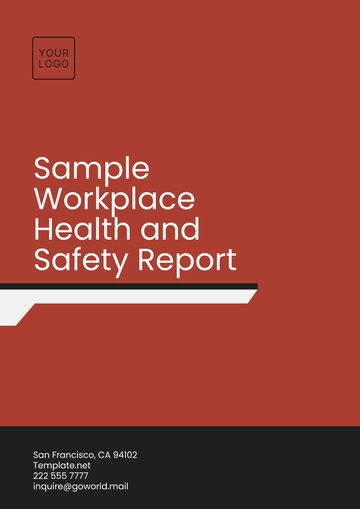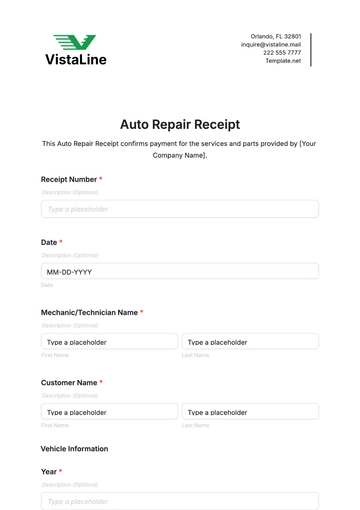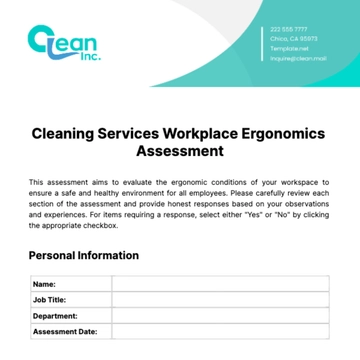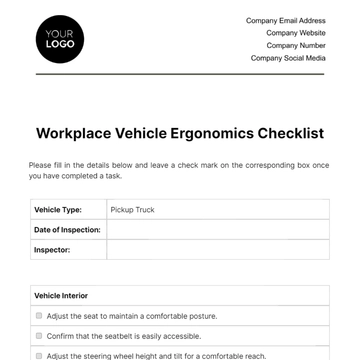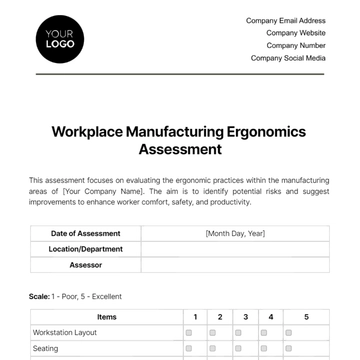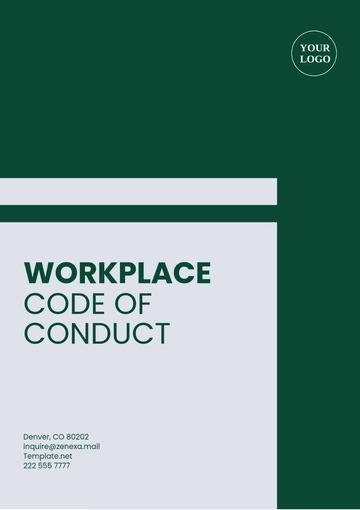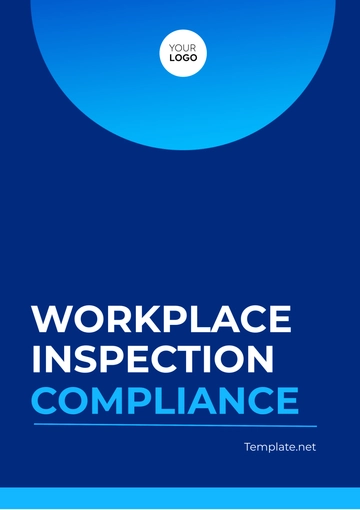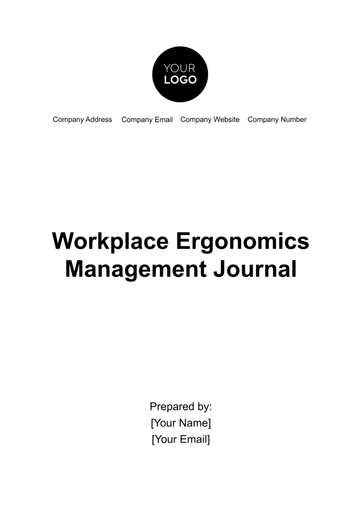Free Workplace Safety Training Outline
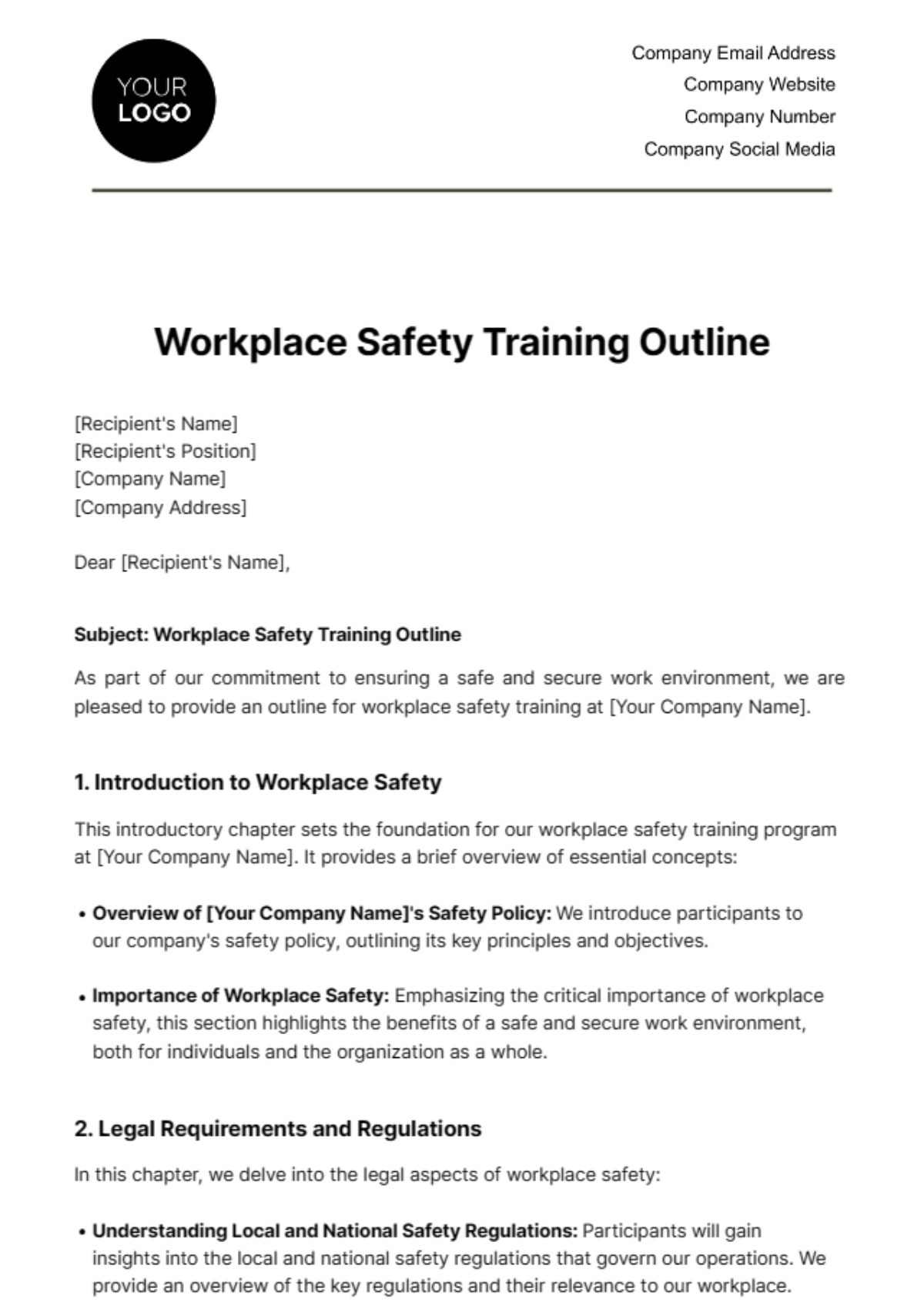
[Recipient's Name]
[Recipient's Position]
[Company Name]
[Company Address]
Dear [Recipient's Name],
Subject: Workplace Safety Training Outline
As part of our commitment to ensuring a safe and secure work environment, we are pleased to provide an outline for workplace safety training at [Your Company Name].
1. Introduction to Workplace Safety
This introductory chapter sets the foundation for our workplace safety training program at [Your Company Name]. It provides a brief overview of essential concepts:
Overview of [Your Company Name]'s Safety Policy: We introduce participants to our company's safety policy, outlining its key principles and objectives.
Importance of Workplace Safety: Emphasizing the critical importance of workplace safety, this section highlights the benefits of a safe and secure work environment, both for individuals and the organization as a whole.
2. Legal Requirements and Regulations
In this chapter, we delve into the legal aspects of workplace safety:
Understanding Local and National Safety Regulations: Participants will gain insights into the local and national safety regulations that govern our operations. We provide an overview of the key regulations and their relevance to our workplace.
Compliance and Consequences: This section underscores the importance of compliance with safety regulations. We outline the potential consequences of non-compliance, emphasizing the need for adherence to legal requirements for the safety of all.
3. Hazard Identification and Risk Assessment
This chapter focuses on identifying and managing workplace hazards:
Identifying Workplace Hazards: Participants will learn how to recognize potential hazards in the workplace. We emphasize the importance of vigilance and thorough inspection.
Conducting Risk Assessments: We guide participants through the process of conducting risk assessments for specific tasks or processes. This includes a systematic examination of potential risks and mitigation strategies.
Prioritizing and Mitigating Risks: The chapter concludes by discussing the prioritization of identified risks and the implementation of measures to mitigate them effectively.
4. Emergency Response and Evacuation Procedures
This chapter is dedicated to emergency preparedness and response:
Responding to Different Types of Emergencies: Participants will learn how to respond to various types of emergencies, including fires, chemical spills, and natural disasters, ensuring their safety and that of others.
Evacuation Routes and Assembly Points: We guide evacuation procedures, including routes and designated assembly points, crucial for a swift and safe evacuation.
First Aid and Medical Assistance: This section addresses the availability of first aid stations, trained first aiders, and emergency medical services, ensuring prompt and appropriate care during emergencies.
5. Safe Work Practices and Procedures
In this chapter, we focus on safe work practices and procedures:
Proper Use of Personal Protective Equipment (PPE): Participants will learn the importance of using PPE correctly, including the selection, fitting, and maintenance of safety gear to mitigate risks.
Equipment Safety: We address the safe operation and maintenance of equipment, emphasizing the importance of equipment safety protocols to prevent accidents.
Material Handling: This section discusses the safe handling and storage of materials, promoting best practices to reduce the risk of injuries and incidents related to material handling.
6. Incident Reporting and Investigation
This chapter focuses on the critical aspects of incident reporting and investigation:
Reporting Procedures: Participants will gain insights into the steps they should take to report incidents or safety concerns promptly and accurately, ensuring a swift response.
Investigation Process: We explain how incidents are investigated, including the responsibilities of the investigation team, evidence collection, interviews, and root cause analysis.
Corrective Actions and Preventing Recurrence: This section details the process of implementing corrective actions to prevent incident recurrence, ensuring a safer work environment.
7. Employee Responsibilities
This chapter outlines the specific responsibilities of employees concerning workplace safety:
Compliance with Safety Policies: Employees are expected to adhere rigorously to all safety policies, procedures, and guidelines in the workplace, ensuring their own safety and that of their colleagues.
Reporting Safety Concerns: We emphasize the importance of promptly reporting any safety concerns, hazards, near-misses, or incidents encountered during work.
Participation in Training: Employees are encouraged to actively participate in safety training programs and awareness campaigns provided by the company, empowering them to contribute to a safer work environment.
8. Conclusion and Certification
In this final chapter, we conclude the workplace safety training program:
Recap of Key Safety Points: We provide a concise summary of the key safety points covered throughout the training, reinforcing the importance of workplace safety.
Safety Training Certificates: Participants who complete the training will receive safety training certificates, recognizing their commitment to safety and their role in fostering a secure work environment at [Your Company Name].
If you have any questions or require further information, please do not hesitate to contact me at [Your Company Number]. We look forward to implementing this training outline to enhance workplace safety at [Your Company Name].
Thank you for your attention to this matter.
Sincerely,

[Your Name]
[Your Position]
- 100% Customizable, free editor
- Access 1 Million+ Templates, photo’s & graphics
- Download or share as a template
- Click and replace photos, graphics, text, backgrounds
- Resize, crop, AI write & more
- Access advanced editor
Enhance workplace safety with Template.net's Workplace Safety Training Outline Template. Completely editable and customizable using our advanced Ai Editor Tool, this template simplifies training program creation. Address safety protocols effectively, tailor content to your organization's needs, and ensure comprehensive employee training. Streamline safety initiatives with Template.net's user-friendly solutions.
